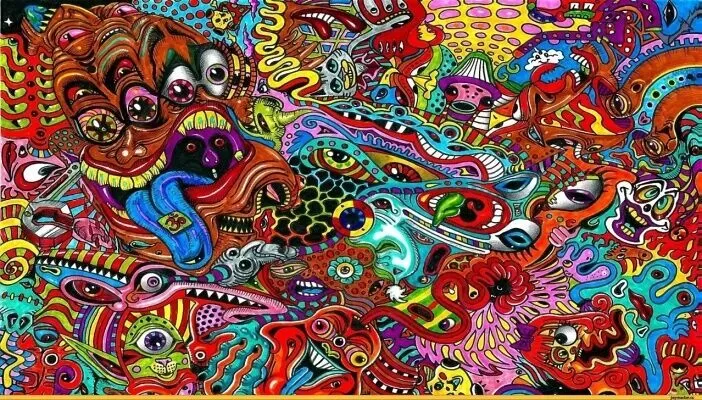StoryCraft
Making the Reader Hallucinate

Good, evocative writing is very much a drug. You, the benevolent (or not) narcotics dealer, deceive your readers’ senses to the point where they taste, smell, hear and feel through, of all things, their eyes. This doesn’t seem so fraudulent at first, but really think about how you are creating those sensations.
At its most base, writing is nothing more than black ink or pixels, arranged in abstract, arbitrary symbols. From this purely visual, purely abstract beginning, we elicit hallucinations in our readers until they are tasting strawberries, flinching from the sound of gun fire and visualizing the feeling of silk on skin. There’s a word for this – synesthesia.
When you reduce writing to the art of visual synesthesia, it becomes much easier to create memorable scenes. You just have to practice observing. Let’s try a simple exercise. Look at your keyboard right now and describe it. Here’s my non-synesthesia description.
“The keyboard is black with white letters on each key. It is a little bit shiny. It measures 12 inches by 8 inches. It transfers information from my fingers to the computer, allowing me to type. It is useful in my capacity as a writer.”
Is this in any way exciting to you? I’m betting not.
But let’s play with that a little bit. Tap on your keyboard. Does it sound hollow or solid? Imagine the little mechanisms beneath each key sliding in their tracks. What kind of mechanism do you think it is? Are the keys worn smooth or do they retain some texture? How do your wrists feel resting against the plastic? Describe the feeling of tendons sliding through their sheaths in your forearms, the tiny little muscles flexing one by one, working the ligaments over your knuckles.
This is what happens when I go nuts trying to make you hear, feel and smell with your eyes.
“There must be rubber sandwiched in there somewhere, somewhere under the brittle plastic keys. The soft, cushioned impact of the key on the board beneath is just too gentle to otherwise explain. My fingers settle down over the shining surface, over the thin film of sebaceous oils left over from my last session, and the session before that, and the session before that. Every once in a while I look down and admire the natural elegance of my human hand. I watch as the tendons slide frictionless over my knuckles, rippling the skin above and stretching for the shift key. Ten fingers, thirty eight knuckles, two wrists and forty muscles contracting, relaxing in my forearms – all working in concert so that I, by tapping on plastic squares, might invade your mind and fill it with my imaginings.”
That was a little more interesting, no?
Really play with this in your mind and you’ll notice a shift in your perception. Initially, you have nothing but a Platonic form – keyboard. Pay attention to the component parts of your experience with the keyboard, though, and suddenly your imagination fills in imperfections and smells and sounds and real, concrete sensations.
You can’t depend on synesthesia too much before you end up with a book of nothing but scenery porn. Unless you’re very, very good, scenery porn gets tedious after about 5 pages. However, if you want your readers to get inside your characters and empathize, to feel like they are actually in the scene, tiny details of sensation make a great tool.
Imagine a murderer now. He just finished disposing of the body. He is happy, satisfied. He sits down at his computer and writes this:
“There must be rubber sandwiched in there somewhere, somewhere under the sharp, brittle plastic keys. The cushioned impact of the key on the board beneath is just too gentle to otherwise explain. My fingers settle down over the shining surface, over the thin film of sebaceous oils and bits of gristle left over from my last session, and the session before that, and the session before that. Every once in a while I look down and admire the natural elegance my powerful, precise human hand. Those same fingers that, just hours before tore fiber from bone, now so delicately tapping. I watch as the tendons slide frictionless over my knuckles, rippling the skin above and stretching for the shift key. Ten fingers, thirty eight knuckles, two wrists and forty muscles contracting, relaxing in my forearms – all working in concert so that I, by tapping on this piece of plastic, might reach a thousand miles and put this idea straight into your head. I like it there, in your head – makes me feel snuggly.”
I’m betting that, whatever you feel after reading that last paragraph, bored isn’t on the list. Isn’t this villain much more real now that you know how he experiences the world sensually? He’s more likely to scare you, to give you horrible conflicts of loyalty, to seduce you to the dark side, to keep you turning the pages. This is the power of synesthesia. Proceed with caution.
